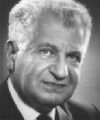Template:Selected anniversaries/June 29: Difference between revisions
No edit summary |
No edit summary |
||
| Line 7: | Line 7: | ||
||Moritz Abraham Stern (b. 29 June 1807) was a German mathematician. Stern was interested in primes that cannot be expressed as the sum of a prime and twice a square (now known as Stern primes). He is known for formulating Stern's diatomic series, which counts the number of ways to write a number as a sum of powers of two with no power used more than twice. Pic. | ||Moritz Abraham Stern (b. 29 June 1807) was a German mathematician. Stern was interested in primes that cannot be expressed as the sum of a prime and twice a square (now known as Stern primes). He is known for formulating Stern's diatomic series, which counts the number of ways to write a number as a sum of powers of two with no power used more than twice. Pic. | ||
||1818 – Angelo Secchi, Italian astronomer and academic (d. 1878) Fr. Pietro Angelo Secchi SJ ( | ||1818 – Angelo Secchi, Italian astronomer and academic (d. 1878) Fr. Pietro Angelo Secchi SJ (b. 29 June 1818) was an Italian astronomer. He was Director of the Observatory at the Pontifical Gregorian University (then called the Roman College) for 28 years. He was a pioneer in astronomical spectroscopy, and was one of the first scientists to state authoritatively that the Sun is a star. | ||
File:George Ellery Hale.jpg|link=George Ellery Hale (nonfiction)|1868: Astronomer and journalist [[George Ellery Hale (nonfiction)|George Ellery Hale]] born. He will discover magnetic fields in sunspots, and be leader or key figure in the planning or construction of several world-leading telescopes. | File:George Ellery Hale.jpg|link=George Ellery Hale (nonfiction)|1868: Astronomer and journalist [[George Ellery Hale (nonfiction)|George Ellery Hale]] born. He will discover magnetic fields in sunspots, and be leader or key figure in the planning or construction of several world-leading telescopes. | ||
| Line 18: | Line 18: | ||
||Ernest Amédée Barthélemy Mouchez (d. 29 June 1892) was a French naval officer who became director of the Paris Observatory and launched the ill-fated Carte du Ciel project in 1887. | ||Ernest Amédée Barthélemy Mouchez (d. 29 June 1892) was a French naval officer who became director of the Paris Observatory and launched the ill-fated Carte du Ciel project in 1887. | ||
||Eduard Čech (b. 29 June 1893) was a Czech mathematician born in Stračov (then Bohemia, Austria-Hungary, now Czech Republic). His research interests included projective differential geometry and topology. He is especially known for the technique known as Stone–Čech compactification (in topology) and the notion of Čech cohomology. Pic. | |||
File:Thomas Henry Huxley.jpg|link=Thomas Henry Huxley (nonfiction)|1895: Biologist [[Thomas Henry Huxley (nonfiction)|Thomas Henry Huxley]] dies. He is known as "Darwin's Bulldog" for his advocacy of Charles Darwin's theory of evolution. | File:Thomas Henry Huxley.jpg|link=Thomas Henry Huxley (nonfiction)|1895: Biologist [[Thomas Henry Huxley (nonfiction)|Thomas Henry Huxley]] dies. He is known as "Darwin's Bulldog" for his advocacy of Charles Darwin's theory of evolution. | ||
Revision as of 07:19, 24 March 2018
1868: Astronomer and journalist George Ellery Hale born. He will discover magnetic fields in sunspots, and be leader or key figure in the planning or construction of several world-leading telescopes.
1869: Niles Cartouchian and Egon Rhodomunde Confront Gnotilus wins Pulitzer Prize for Most Astonishing Illustration of the Year.
1895: Biologist Thomas Henry Huxley dies. He is known as "Darwin's Bulldog" for his advocacy of Charles Darwin's theory of evolution.
1896: Physicist Boris Yakovlevich Podolsky born. He will work with Albert Einstein and Nathan Rosen on entangled wave functions and the EPR paradox.
1963: Physicist and educator Nikolay Basov uses new theory of quantum electronics to detect and prevent crimes against mathematical constants.




